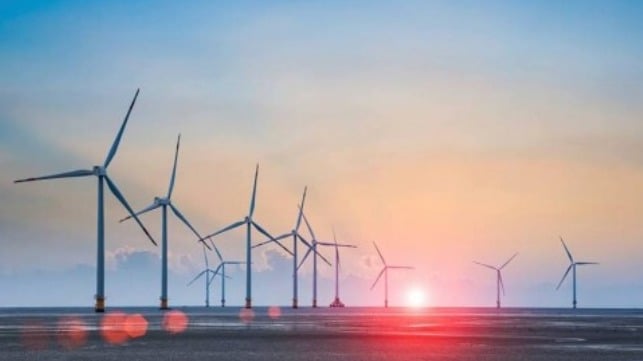DOE Reports Supply Chain Must be Developed to Meet Offshore Wind Goals

To meet the Biden administration’s goals to develop a robust offshore wind power generation industry by 2030, a significant ramp-up in domestic manufacturing, infrastructure, and workforce will be required. A new research study has been launched to map the requirements to meet the target for 30 GW of offshore wind power by 2030 while evaluating how the U.S. supply chain can evolve to achieve the national offshore wind energy target.
The first phase of the study being led by the National Renewable Energy Laboratory of the U.S. Department of Energy, along with the Business Network for Offshore Wind, and DNV, mapped the requirements while concluding that currently, the supply chain is too limited to support the needed levels of commercial-scale offshore wind energy deployment. Ongoing efforts to develop the domestic supply chain they are reporting have been focused on individual state levels, while a comprehensive assessment of how to strategically develop a supply chain that benefits the entire industry and country is needed.
“Most components in the early 2020s will be sourced from European suppliers, which could cause bottlenecks unless a domestic supply chain develops in time to achieve the offshore wind energy target,” the NREL report warns.
In the report from the first phase of the project, which was released in March 2022, NREL sought to highlight the top-level demand for deployment, components, ports, vessels, and workforce required to achieve the national offshore wind target of 30 gigawatts of capacity. They presented a list of requirements, that includes:
• 2,100 wind turbines
• 2,100 foundations
• 6,800 miles of cable
• 58 crew transfer vessels
• 5 to 6 wind turbine installation vessels
• 11 service operation vessels
• 4 cable lay vessels
• 2 scour protection installation vessels
• 10 transport vessels
• 12,300 to 49,000 full-time equivalents average annual workforce
The research further highlights that while projects are moving forward, only one major offshore wind component manufacturing facility was operational as of early 2022. While original equipment manufacturers and project developers have announced plans to build at least 11 new manufacturing facilities in the United States, including those focused on wind turbine blades, foundations, towers, and cables, they emphasize the urgency.
Few existing East or West Coast ports they highlight have sufficient capabilities to fully support offshore wind energy activities, although several ports are actively investing in infrastructure upgrades. At the same time, the installation and maintenance of the new wind farms require new vessels to alleviate the risks of missing the national offshore wind energy target, with wind turbine installation vessels posing the biggest risk.
The first report also explored the need for major component manufacturing in the United States. The research team identified several critical-path subcomponents that pose a challenge to domestic manufacturing because of their size or specialty. These include yaw and pitch bearings, permanent magnets, flanges and other large cast or forged components, steel plates that are rolled into monopiles or towers, electrical systems for offshore substations, and mooring chains.
The second phase of this project is now commencing, and it will build on the high-level demand information described in the first report to Identify realistic pathways to achieve this supply chain. The research team will determine the readiness level of existing industries to support supply chain development.
They plan to characterize supply chain scenarios that would achieve complete domestic manufacturing of components by 2030, including manufacturing facilities, workforce requirements, and manufacturing capabilities.
